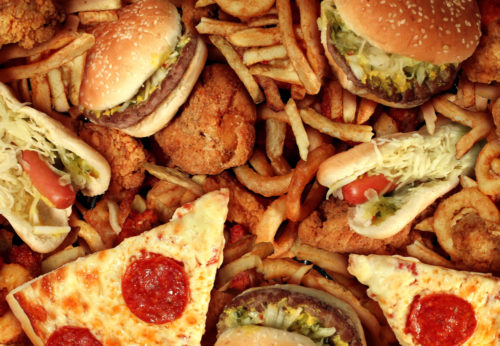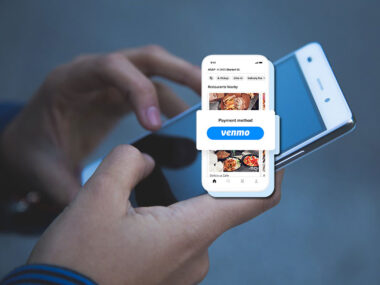“The reason that the rich were so rich, Vimes reasoned, was because they managed to spend less money.
Take boots, for example. He earned thirty-eight dollars a month plus allowances. A really good pair of leather boots cost fifty dollars. But an affordable pair of boots, which were sort of OK for a season or two and then leaked like hell when the cardboard gave out, cost about ten dollars. Those were the kind of boots Vimes always bought, and wore until the soles were so thin that he could tell where he was in Ankh-Morpork on a foggy night by the feel of the cobbles.
But the thing was that good boots lasted for years and years. A man who could afford fifty dollars had a pair of boots that’d still be keeping his feet dry in ten years’ time, while the poor man who could only afford cheap boots would have spent a hundred dollars on boots in the same time and would still have wet feet.
This was the Captain Samuel Vimes ‘Boots’ theory of socioeconomic unfairness.”
– Terry Pratchett, “Men at Arms”
There is a pervasive myth that getting fast food is, on the whole, cheaper than going to the grocery store, buying ingredients, and preparing your own meal. The claim is that it’s not only cheaper up front, the cost-per-calorie is better, making junk food the better option for lower-income families. This is patently false, but thanks to marketing tactics aimed at those who feel they lack time in their schedule, don’t want to make the effort to cook, and who are simply burnt out, eating out often seems more appealing than eating in. In the end, it is costing you more than you imagine.
Table of Contents
Fast Food Prices
After a day of soul-crushing work, running out to McDonald’s, where it will take all of 5 minutes to pay for and receive a Big Mac, fries, and a large Coke, might seem like the most convenient, cost-efficient way to get dinner. The key part is that it’s fast and cheap. What’s $6 if it is saving you time, both grocery shopping and preparing a meal?
It adds up. In 2017, the New York Post reported that Americans spent an average of almost $1,200 on take-out meals. Between 2013 and 2016, more than a third of US adults ate fast food on any given day, which equates to about 84.8 million adults. 2018 saw Americans eating out more than any year since 1992, with sales at food-service and drinking establishments rising 1.3 percent in July, with a three-month annualized gain at 25.3 percent. An historic achievement, July brought in $61.6 billion to restaurants.
In 2015, Americans spent more at restaurants, including fast food, than on groceries. January of that year saw grocery stores taking in $50.466 billion, while restaurants did $50.475 billion in sales.
Making a Sandwich
It’s possible to eat healthy on a budget. Compare the price of making sandwiches for a work week. A trip to Albertsons in the first week of January 2019 revealed an average loaf of white bread to be about $2. A pound of high quality turkey was about $13, while average quality was about $6. A jar of mayonnaise, on the low end, was $4. Add in a pack of sliced cheese for $3. That’s $14 for an average-quality turkey and cheese sandwich every day for a week. Between 2 people, it’s still about $2 per day for a sandwich. It’s not a full meal, of course, as adding in a fruit or vegetable would cost slightly more, but it’s a start. You can fill out the rest of your meal by making a number of educated grocery decisions, such as buying in bulk or what is in-season.
There’s more than just the price of the meal to consider, however. In making your own sandwich, you can control the salt, sugar, and fat content far better than you can with fast food. Too much salt, sugar, and fat can contribute to higher blood pressure and cholesterol, as well as creating a higher risk for diabetes. Fast food is often high in salt or sodium especially, but is also high in sugar and fat. Even “healthy” fast food options, like salad, can have high calories and fat content, such as the McDonald’s Crispy Chicken Bacon Ranch Salad. .
Cooking Takes Too Long
For many, making a meal simply takes too long. You have to spend the time in the grocery store or a farmers market, then spend time actually cooking. It could take up to an hour in just the kitchen alone before your meal is ready, while hitting the drive-through on the way home after work takes just a few minutes of sitting in your car. Therefore, people often think, the time saved is clearly worth the extra money.
Consider millennials. Buzzfeed recently dubbed millennials the Burnout Generation. Being burnt out isn’t out of the ordinary for them; it’s a default state. That means they have no desire to cook. They want something fast and easy to combat the stress of daily life, despite also wanting to Instagram a fabulous meal. They opt for junk food; in their mind, it’s cheaper and easier, doesn’t take time to cook, and is perfect for unwinding while watching TV.
Why Cook When You Can Watch TV?
“The thing that Americans do most often with their free time is not cooking or exercising or hiking or any other seemingly salutary activity,” writes Alexis C. Madrigal in The Atlantic. No, Americans watch TV. That’s the default the current move to even tinier screens has to be measured against.” Per day, Americans watch a staggering 7 hours and 50 minutes of TV per household. Their focus, it seems, is mental health and unwinding, not physical health. It’s not lack of time; it’s lack of will. It’s understandable, but detrimental to their health.
As the earlier New York Post article notes, 37 percent of people polled said they ordered take-out because they were too lazy, while 26 percent noted it was because they had no time to cook. There was frequently little or no time to prepare a meal from scratch, according to 40 percent of respondents, and 61 percent of those were aged 18-24. Bear in mind millennials are 22-38 years old, currently. As for actual time spent, 60 percent said it takes them over an hour to make a meal, and the average person takes 92 minutes.
Poor, Health, and Poor Health
It’s easy to assume that the $1.51 billion McDonald’s spends in marketing is mostly targeted at the poor, encouraging them to get a fast, cheap meal. After all, 80 percent of the lowest 10 percent of income earners ate at least one fast-food meal each week. Yet, 75 percent of the richest 10 percent did the same. Middle-class families at 4.2 fast food meals in 3 weeks, compared to 3.6 for the lowest income. Across all adults, about 20 percent ate fast food once a week in 2016.
While prices were mentioned above, the real cost, as mentioned, is to your health. Is it any wonder that, given how often Americans have fast food, 71.6 percent of adults aged 20 and over were overweight in a 2015-2016 study by the CDC? About 39.8 percent of adults 20 and over are obese.
The Price-Per-Calorie Argument
An argument can be made that, for example, pre-packaged junk food or fast food benefits the poor or homeless population, as it’s cheaper per-calorie. A single meal at a fast food restaurant could give an entire day’s worth of calories for the same price as just the turkey sandwich from above.
The problem with this argument is that people, as we have seen with the overweight stats, are not lacking in calories. Many are already eating too many calories. Instead of providing a healthy source of calories, having an excessive amount of sugar and sodium means they are more likely to develop high blood pressure or diabetes. You can’t control what goes into pre-packaged junk food or a Big Mac, while you can control what goes into meals you make.
Fast Food is Addictive
A final problem is that junk food — specifically hyper-processed food — is essentially addictive. The New York Post reported that, above laziness and lack of time, craving fast food was the most commonly given reason for ordering out, at 44 percent. Combine that with the aforementioned marketing money, and there is a recipe for getting anyone hooked on unhealthy but fast and convenient food. It provides short-term gratification and feeds an addiction.
The Long-Term Cost
As mentioned, the actual price of the food should not be your final consideration. As far as money is concerned, fast food costs as much as grocery shopping. The savings come in the form of time saved from having to shop and then prepare a meal. However, the true cost of eating fast food comes at your health. With higher fat, sugar, and sodium content, you are more likely to become overweight and develop high blood pressure, heart problems, or diabetes.
It may be unreasonable to completely cut out all junk food. Fast food, after all, does serve a purpose. Instead, practice moderation and exercise regularly to keep your junk food checkbook balanced.
Image source: https://depositphotos.com/





